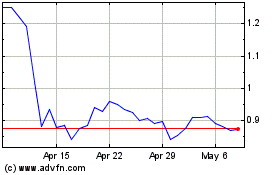Bitcoin ETFs Are “Important, But Not The Drivers,” On-Chain Analyst Argues
14 August 2024 - 7:00PM
NEWSBTC
An on-chain analyst has explained why the Bitcoin spot
exchange-traded funds (ETFs), although important, may be something
other than the drivers in the market. Bitcoin Spot ETFs Compared
With Other Capital Flows On The Network In a new post on X,
on-chain analyst Checkmate has discussed how the different capital
flows in and out of Bitcoin stack up against each other. The first
netflow of interest is naturally the total capital netflow itself.
This netflow is calculated using the Realized Cap indicator. The
Realized Cap is a capitalization model for BTC that calculates the
asset’s total valuation by assuming that the “real” price of any
coin in circulation was the price at which it was last moved on the
network. The last transaction of any token was likely the last time
it changed hands, so the price at its time would make up for its
current cost basis. As the Realized Cap essentially sums up the
cost basis of every coin in circulation, it tells us about the
amount of capital the investors have used to purchase the
cryptocurrency. Related Reading: Only 66% Of Ethereum Holders In
Profit Despite 21% Price Jump Therefore, the changes in this metric
would reflect the incoming or outgoing capital from the sector.
Below is the chart shared by the analyst that shows how the monthly
version of this netflow has looked like for Bitcoin during the past
year. As the graph shows, the change in the Bitcoin Realized Cap
has been positive for almost this period, suggesting that a net
amount of fresh capital has only been flowing into the asset.
Currently, BTC is observing net inflows worth $12 billion per
month. Checkmate has also attached the data for the flows related
to the spot ETFs in the same chart. The green curve represents
the monthly change for the ETFs excluding GBTC, while the red one
corresponds to the GBTC outflows. The former stands at a positive
$3.7 billion per month, while the latter is at a negative $0.93
billion per month. The capital flows related to these financial
instruments don’t make up for anywhere near most of the market. “At
best, the ETFs are 20% of the influence,” notes the analyst. “They
are important, but not the driver.” The final metric in the chart
is related to the supply change of the Bitcoin long-term holders
(LTHs), who are the investors holding onto their coins since more
than 155 days ago. Related Reading: Bitcoin Whales Participate In
$588 Million Selloff: Is There More To Come? It would appear that
these HODLers had been selling earlier in the year. Still,
recently, their supply change has again flipped into positive
territory, with their combined balance now growing at a rate of
$1.6 billion per month. BTC Price In a sharp move up, Bitcoin has
recovered beyond the $61,300 mark during the past day. Featured
image from Dall-E, checkonchain.com, chart from TradingView.com
Flow (COIN:FLOWUSD)
Historical Stock Chart
From Jul 2024 to Aug 2024

Flow (COIN:FLOWUSD)
Historical Stock Chart
From Aug 2023 to Aug 2024
